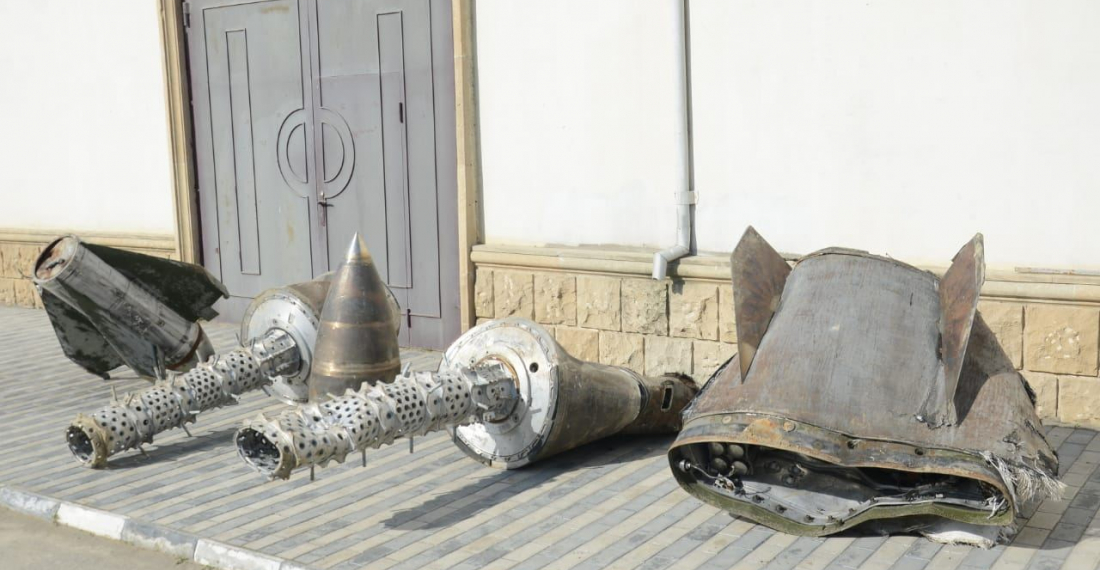The Azerbaijani National Agency for Mine Action (ANAMA) has reported finding fragments of Russian Iskander missiles close to the city of Shusha, which came under Azerbaijani control during the 44-day war last autumn. The fragments, which are being exhibited in Baku, may suggest that the Iskander missile system was used during last year’s fighting despite claims by the Russian Ministry of Defence (MOD) to the contrary.
On Wednesday (31 March) a representative from ANAMA told caliber.az that fragments established to be from Iskander missiles had been found in two locations close to Shusha during mine and ammunition clearance on 15 March. The fragments were confirmed as being part of the Iskander missile system by their identification number – 9M723.
The announcement of the fragments is the latest in a saga of speculation over whether Armenia used the Iskander missile system during last year’s war. In November, Movses Hakobyan, the former head of the Military Control Service of the Armenian MOD, said – the day after resigning from his post – that Armenia had used Iskander missiles during the war but did not reveal where. Then, in February, responding to criticism by former president Serzh Sargsyan that Armenia should have used the Iskander missile systems during the early days of last year’s escalation, the Armenian prime minister, Nikol Pashinyan, claimed that they had indeed used them, but the missiles had “failed to explode or exploded in only 10% of the cases”. This claim was then quickly denied by the Russian MOD, who declared that, “According to objective and reliable data confirmed by the live monitoring and recording system, none of the missile systems of this type was used during the conflict in Nagorno-Karabakh”. On 1 March, a spokesperson for the Armenian prime minister told Armenpress that Pashinyan and Russian President Vladimir Putin had spoken on the phone about this matter and that the former had admitted to having been incorrectly briefed on the situation.
If confirmed, these fragments raise doubt on this claim. However, yesterday (2 April), Dmitry Peskov, the Russian presidential spokesperson, reiterated that the missiles’ non-use during last year’s war had already been confirmed, and he had no information on from where these fragments could have come.
Adding another layer to the story, ANAMA reports that the missile fragments have been identified not as the ‘Iskander E’ model of short-range missiles – understood to have been exported by Russia to Armenia – but the longer-range and more-destructive ‘Iskander M’ model. A retired Azerbaijani army general speaking to KONKRET.az speculated that this means either Russia had, in fact, given Armenia the more powerful missile, or that these missiles had not been fired at Shusha by the Armenian army – drawing attention to the Russian 102nd military base in the Armenian city of Gyumri.



